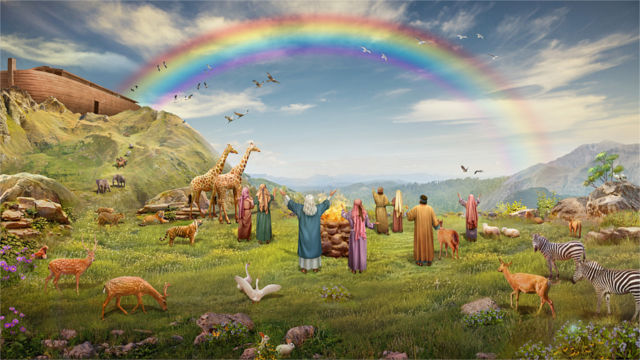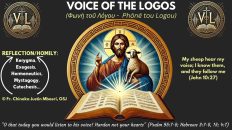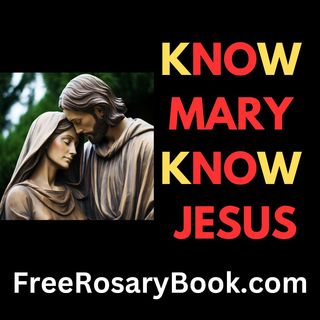The Noahic Covenant (i.e. God’s Covenant with Noah) as we read today in the First Reading (cf. Genesis 9:1-13) is the covenantal promise of God not to destroy the world again with water. For clarification, a covenant is a pact or an agreement between two or more parties. Biblically speaking, covenants have signs that represent them. The sign of the Noahic covenant is the rainbow. It is pertinent to note that in the mind of the Jews, Noah is considered the second Adam, for out of him the whole earth was peopled once again after the flood. This was a kind of new creation through Noah. After Noah, the world again slid into sin, with the tower of Babel as the signature of sin; even as righteous as Noah was (Gen 6:9), he was found naked in a drunken stupor (Gen. 9:21). In this dire situation, God continued to enact various covenants through different peoples of old (Abraham, Israel, David) along the course of time, until at the fullness of time, enacted the New and eternal Covenant through his beloved Son, our Lord Jesus Christ. The sign of the New Covenant is the Lord’s table (altar) containing the Bread of life and the Chalice of Salvation (cf. Luke 22:19–20; Matthew 26:26–28; Mark 14:22–24). The New Covenant was fulfilled in Christ’s suffering and death on the cross of Calvary.
This is the message of the newness of life brought about by Jesus in relation to his mission, being mindful of the misconceptions the Jews and his disciples had about him, and in order to explain it better to them in today’s Gospel (cf. Mark 8:27-33), he asked: ‘who do you people say I am…who do you say I am?’ Although it was Peter who spoke up and said to him, ‘You are the Christ…’ he still misunderstood Jesus’ mission, for it wasn’t clear to them at that moment. They still had the idea of a political and nationalistic type of Messiah who would wage war with the civil authorities, and that explains why Jesus began to teach them the reality of the New Covenant; that He (the Messiah) was destined to suffer grievously and be put to death on the cross and rise on the third day. Having portrayed himself as the “suffering Servant of Yahweh”, his disciples misunderstood it and Peter disagreed with him.
Dear friends in Christ, the Noahic Covenant in many ways foreshadowed the New Covenant in Christ. Put differently, the New Covenant fulfilled much that the Noahic Covenant anticipated. The shedding of blood took on new meaning in the Noahic Covenant. The shedding of Christ’s blood at Calvary suddenly brought the ninth chapter of Genesis into full focus. In the Noahic covenant, God sought to protect human life; in the New Covenant, Jesus Christ has come to give us life in abundance – “Whoever eats my flesh and drinks my blood has eternal life, and I will raise them up at the last day.” (John 6:54). At the Lord’s table (Eucharistic celebration), we celebrate this wonderful Sacrament which He has left for us, a memorial of his passion and death – “Do this in memory of me” (cf. Luke 22:19, 1 Corinthians 11)
Let us, therefore, approach the Lord in the Eucharist with confidence, giving thanks to God and asking to be made whole and renewed in the Spirit; for he would look down from on high and save us; just as the Psalmist of today puts it: “He looked down from heaven to the earth that he might hear the groans of the prisoners and free those condemned to die.” {Psalm 101(102):16-21,29,22-23}
Shalom!
©Rev. Fr. Chinaka J. Mbaeri, OSJ


